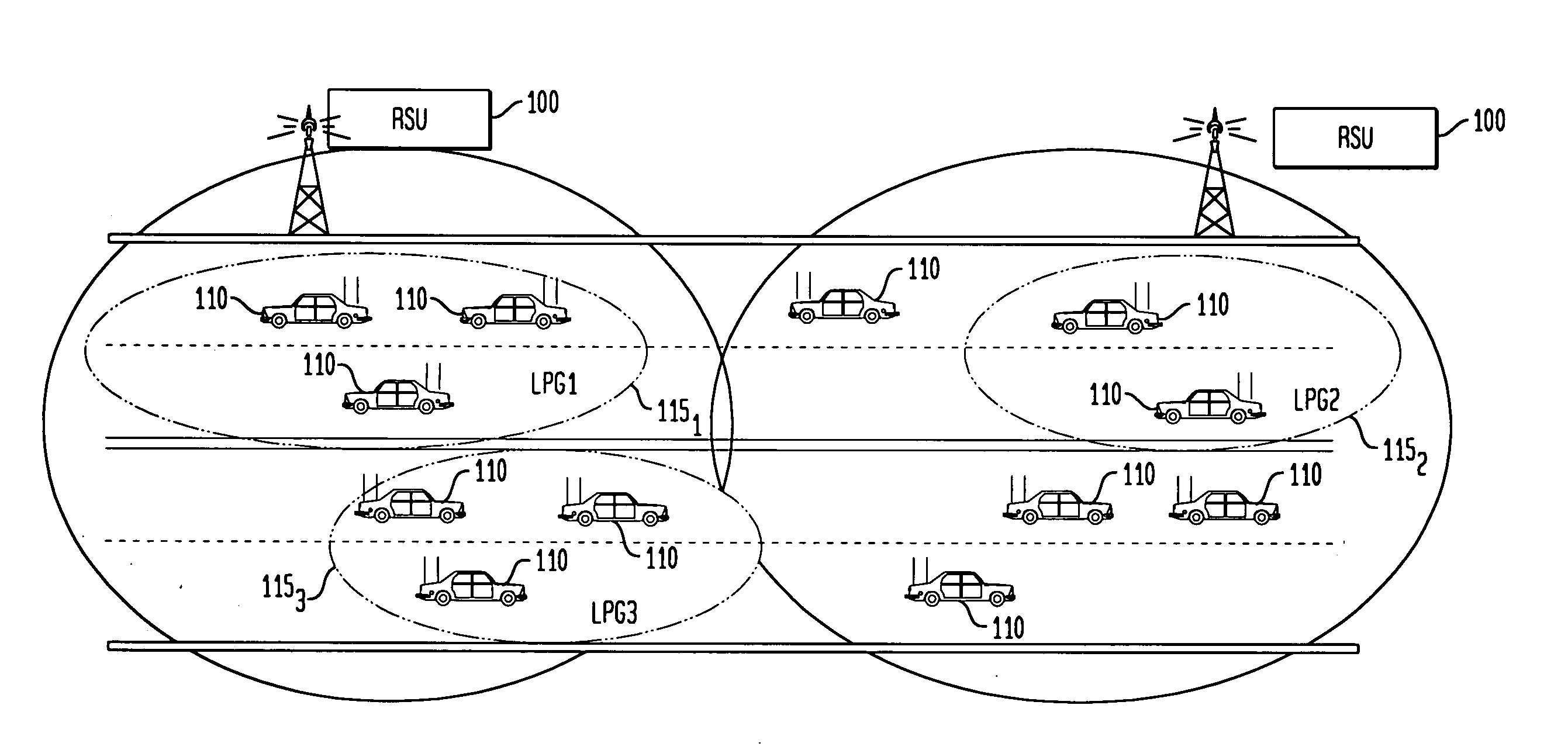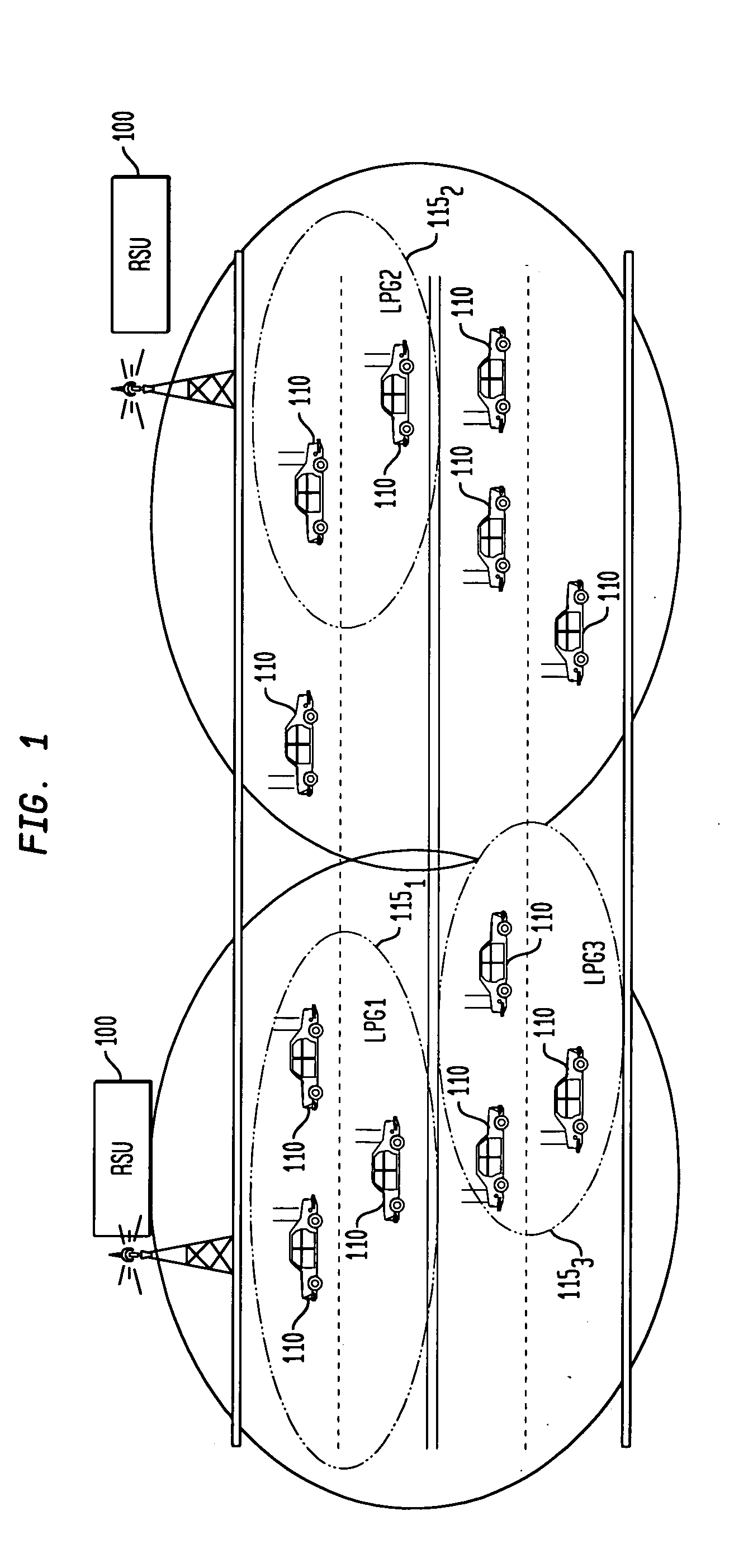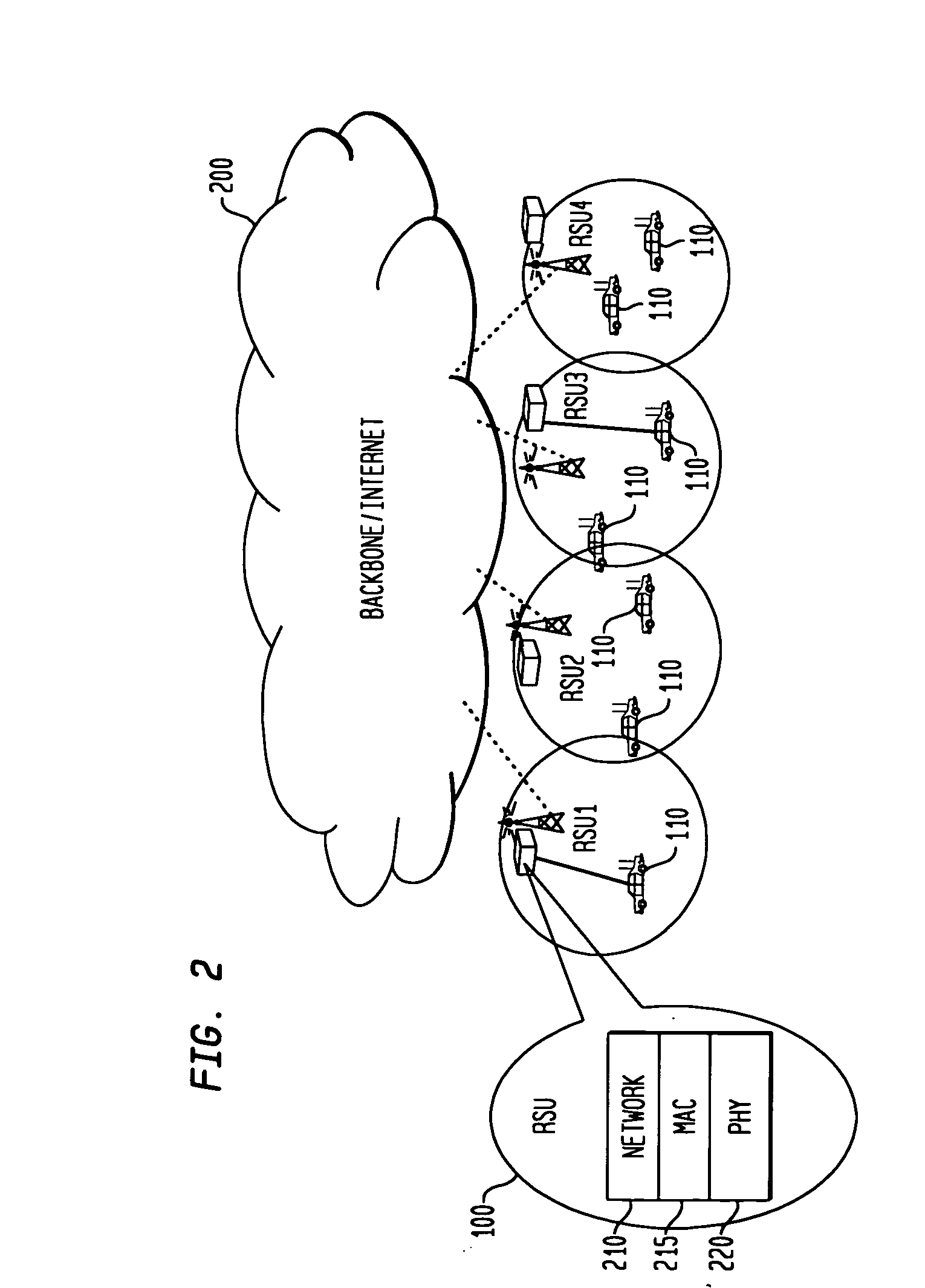Method and communication device for routing unicast and multicast messages in an ad-hoc wireless network
a wireless network and multicast message technology, applied in the field of network communication, can solve the problems of interference with each other's transmission, and insufficient wireless antenna installation on a moving vehicle,
- Summary
- Abstract
- Description
- Claims
- Application Information
AI Technical Summary
Benefits of technology
Problems solved by technology
Method used
Image
Examples
Embodiment Construction
[0097]In accordance with the invention, the ad-hoc network is divided into two types of nodes: a roadside unit (hereinafter “RSU”) and a moving vehicle. The RSU is a stationary node while vehicles can be moving in groups.
[0098]FIG. 1 illustrates an example of the ad-hoc network in accordance with the invention. The RSU 100 is located along the side of a roadway. The number of RSU 100 used in the network will depend on several factors such as the range of the radio antenna of the RSU 100, desired communication range, number of moving devices, topology of the land, the environmental conditions, traffic patterns and population density. FIG. 1 illustrates two RSUs 100. The encircled area represents the radio range for each RSU 100. Each RSU 100 can be used to communicate with moving-vehicles 110 traveling either alone or a group of vehicles.
[0099]The moving vehicles 110 can be organized into manageable groups. These groups are used to coordinate transmission of data between the nodes. T...
PUM
 Login to View More
Login to View More Abstract
Description
Claims
Application Information
 Login to View More
Login to View More - R&D
- Intellectual Property
- Life Sciences
- Materials
- Tech Scout
- Unparalleled Data Quality
- Higher Quality Content
- 60% Fewer Hallucinations
Browse by: Latest US Patents, China's latest patents, Technical Efficacy Thesaurus, Application Domain, Technology Topic, Popular Technical Reports.
© 2025 PatSnap. All rights reserved.Legal|Privacy policy|Modern Slavery Act Transparency Statement|Sitemap|About US| Contact US: help@patsnap.com



